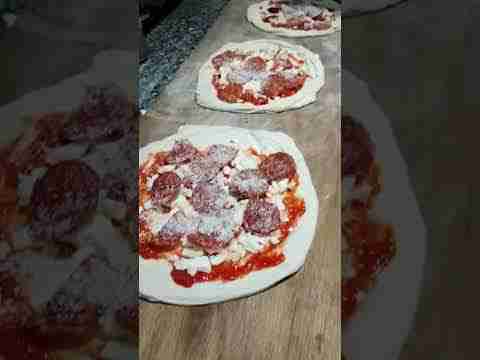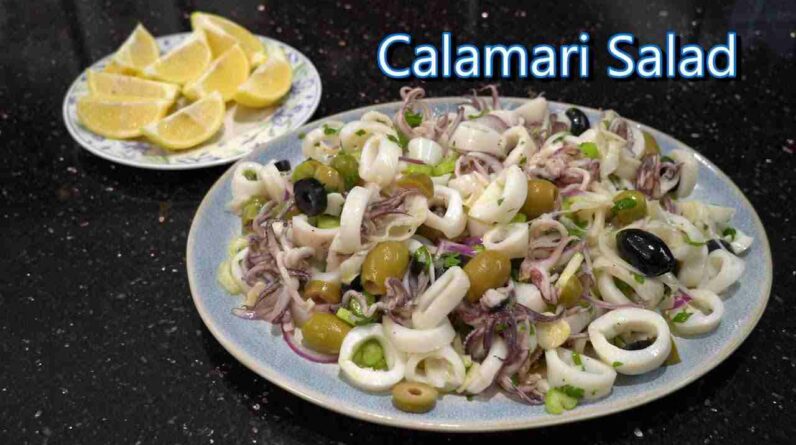Making a great pizza crust at home may seem like a daunting task, but fear not! We have uncovered the secret that will take your homemade pizza to the next level. With the perfect combination of ingredients and a few key techniques, you’ll be able to achieve a crust that is crispy on the outside, yet soft and chewy on the inside. Whether you prefer thin and crispy or thick and doughy, we’ve got you covered. Get ready to impress your family and friends with the best homemade pizza crust they’ve ever tasted!

Choosing the Right Flour
All-Purpose Flour
When it comes to making pizza crust, one of the first choices we have to make is what type of flour to use. All-purpose flour is a versatile option that many home bakers already have in their pantry. It contains a moderate amount of protein, which helps provide structure to the dough. All-purpose flour creates a pizza crust with a balanced texture that is neither too chewy nor too tender. It works well for most types of pizza, from thin crust to thick and fluffy.
Bread Flour
If you prefer a chewier and more elastic pizza crust, bread flour is a great choice. This type of flour has a higher protein content compared to all-purpose flour, which results in a stronger gluten structure. The extra gluten development gives the crust a wonderful chewy texture, perfect for those who like a bit of resistance in every bite. Bread flour also yields a crust that is slightly more dense and substantial.
00 Flour
If you’re aiming to replicate the thin and crispy crusts found in traditional Neapolitan-style pizza, 00 flour might be the flour for you. This Italian flour is finely ground and has a low protein content, resulting in a delicate and tender crust. The low protein content helps prevent excessive gluten development, making it easier to achieve a thin and crispy texture. 00 flour is highly recommended for making thin-crust pizzas, but it may not be ideal for thicker crusts or pizzas with a heavier topping load.
Whole Wheat Flour
For those seeking a healthier pizza crust option, whole wheat flour is an excellent choice. This type of flour is made from grinding the entire wheat kernel, which means it contains more fiber and nutrients compared to refined flours. Whole wheat flour adds a subtly nutty flavor to the crust, and its higher fiber content adds a pleasant chewiness. However, it’s important to note that whole wheat flour can make the crust denser and heavier, so it may require extra attention to ensure a light and airy final result.
The Importance of Yeast
Active Dry Yeast
Yeast is a crucial ingredient in pizza crust, as it is responsible for the dough’s rise and the development of those delightful air pockets. Active dry yeast is a common choice for pizza dough and is readily available in most grocery stores. It is sold as dry granules and needs to be activated by dissolving it in warm water before adding it to the dough. Active dry yeast provides a slow and steady rise, resulting in a more complex flavor profile. It’s important to proof the yeast (dissolve it in warm water with a bit of sugar) before using it to ensure its viability.
Instant Yeast
If you’re looking for convenience and speed, instant yeast may be the way to go. Instant yeast is more finely ground than active dry yeast, allowing it to dissolve and activate more quickly. This means that it can be added directly to the dry ingredients without the need for proofing. Instant yeast provides a slightly faster rise compared to active dry yeast, making it a great option for those who want to whip up pizza dough in a shorter amount of time. It’s important to note that instant yeast may result in a slightly less complex flavor compared to active dry yeast.
Fresh Yeast
Fresh yeast, also known as cake yeast or compressed yeast, is less commonly used in home baking but can be a fantastic choice for pizza dough. Fresh yeast is sold as soft blocks and needs to be crumbled and dissolved in water before use. It offers a rapid rise and imparts a slightly more pronounced yeasty flavor to the crust. While it may be harder to find in grocery stores, seeking out fresh yeast can be worth it for those who value the depth of flavor it brings to their homemade pizza crust.

Understanding the Role of Water
Temperature of the Water
The temperature of the water used in pizza dough can greatly affect the final result. For most yeast-based pizza dough recipes, it’s recommended to use warm water in the range of 100°F to 110°F (38°C to 43°C). Warmer water helps activate the yeast and promotes fermentation, leading to a better rise. However, it’s important not to use water that is too hot, as it can kill the yeast and hinder the rise. Using a kitchen thermometer to measure the water temperature is a handy tool to ensure the ideal environment for yeast activation.
Filtered vs. Tap Water
Another consideration when it comes to water is whether to use filtered or tap water. While tap water may be perfectly fine for making pizza dough, using filtered water can remove any chlorine or impurities that may affect the flavor of the crust. Some prefer the cleaner taste that filtered water provides, allowing the other ingredients to shine through. Ultimately, the choice between tap and filtered water is a personal one that depends on the quality and taste of your tap water.
Adding Salt for Flavor
Type of Salt to Use
Salt plays more than just a flavor-enhancing role in pizza crust; it also contributes to the dough’s structure and texture. When choosing the type of salt to use, it’s essential to consider the salt’s texture and how it will distribute throughout the dough. Many recipes call for kosher salt or sea salt because they have larger crystals that are easier to control when measuring and mixing into the dough. Fine-grained table salt can also be used, but it’s essential to adjust the amount accordingly as it is denser than kosher or sea salt.
Amount of Salt to Add
The amount of salt to add to pizza dough depends on personal preference, but it usually falls within the range of 1-2% of the flour weight. Salt enhances the overall flavor of the crust and can also help regulate the yeast’s activity and fermentation. Too little salt may result in a bland-tasting crust, while too much salt can inhibit the yeast’s growth and lead to a slower rise. Experimenting with different amounts of salt can help you find the perfect balance that suits your taste.

Fat and Oil Options
Olive Oil
Adding fat or oil to pizza dough can contribute to its flavor, texture, and overall mouthfeel. Olive oil is a popular choice that adds a rich and slightly fruity flavor to the crust. It also helps keep the dough moist and tender, resulting in a softer and more pliable texture. When using olive oil in pizza dough, it’s important to choose one with a mild flavor, such as extra virgin or light olive oil, to prevent overpowering the other ingredients.
Butter
While not as common as olive oil, butter can be an excellent addition to pizza dough, especially for those seeking a richer and slightly sweeter flavor. Butter adds a luxurious touch and can lend a subtle richness to the crust. It also helps create a tender texture and can contribute to a more golden and crisp crust. When using butter in pizza dough, it should be melted and cooled slightly before incorporating it into the other ingredients.
Vegetable Oil
Vegetable oil is a versatile choice that doesn’t add any distinct flavor to the crust. It can be a great option for those who prefer a neutral taste or want to let the other ingredients take the spotlight. Vegetable oil helps create a soft and tender crust, making it easier to roll out and shape the dough. It is also a suitable choice for those with dietary restrictions, as it is generally free from common allergens.
The Sweetener Dilemma
Sugar
Adding a touch of sweetness to pizza dough can help balance the flavors and contribute to a more well-rounded taste. Sugar is a common sweetener used in pizza dough, and it can help activate the yeast and promote a better rise. It also aids in creating a golden and slightly caramelized crust. When using sugar, it’s important not to add too much, as excessive sweetness can overpower the other flavors and lead to an overly browned crust.
Honey
For those who prefer a more natural sweetener, honey can be a fantastic option. Honey adds a unique floral and earthy flavor to the crust, subtly complementing the savory toppings. It also contributes to a softer and more tender texture. When incorporating honey into pizza dough, it’s important to keep in mind that it is sweeter than sugar, so less quantity is needed. Honey can be drizzled on top of the dough during the resting and rising stages or added directly to the dough during mixing.
Molasses
If you’re looking for a deeper and more complex sweetness, molasses can be an intriguing choice. Molasses has a rich and robust flavor profile, adding a hint of bitterness and savory depth to the crust. It can be particularly delicious when paired with hearty toppings like caramelized onions or smoked meats. When using molasses in pizza dough, a little goes a long way, as it can overpower the other flavors if used in excess.

Kneading the Dough
Hand Kneading
Kneading the pizza dough is an essential step in developing the gluten structure and giving the crust its desired texture. Hand kneading involves manually working the dough on a clean and lightly floured surface. This process requires some time and effort but can be quite therapeutic and rewarding. To hand knead, simply push the dough away from you with the heel of your hand, then fold it back and repeat. Continue the process until the dough becomes smooth, elastic, and springs back when pressed with your fingertips.
Using a Stand Mixer
For those who prefer a more hands-off approach or have limited physical strength, using a stand mixer with a dough hook attachment can be a convenient option. Stand mixers take care of the kneading process, allowing you to multitask or take a break. To knead pizza dough using a stand mixer, simply combine the ingredients according to the recipe and let the mixer do the work. Start at low speed and gradually increase it, allowing the dough to come together and pull away from the sides of the bowl. Once the dough is smooth and elastic, it’s ready for the resting and rising stages.
Resting and Rising
First Rise
After kneading, it’s important to allow the pizza dough to rest and rise. During this time, the yeast ferments, producing carbon dioxide bubbles that give the dough its airy and light texture. The first rise typically occurs in a warm and draft-free environment for an hour or so. It’s recommended to cover the dough with a clean kitchen towel or plastic wrap to prevent it from drying out. The dough should double in size during the first rise, indicating that the yeast is active and working its magic.
Punching Down
Once the dough has finished its first rise, it needs to be punched down. This process removes excess carbon dioxide and redistributes the yeast, ensuring a more consistent rise during the second resting period. To punch down the dough, simply press your fist into the center of the dough, releasing any trapped air. Fold the edges of the dough towards the center, creating a tight ball. This step helps the dough maintain its structure and develop the desired textures.
Second Rise
After punching down, the dough should go through a second rise. This stage allows the yeast to continue its fermentation process, creating more carbon dioxide and developing flavors. The second rise is usually shorter than the first and can last anywhere from 30 minutes to an hour. It’s important not to over-proof the dough during this stage, as it can lead to a less desirable texture, with an overly airy or collapsed crust. Once the dough has completed its second rise, it’s ready to be shaped and baked to perfection.

Getting the Perfect Thickness
Thin Crust
For those who enjoy a delicate and crispy crust, thin-crusted pizza is the way to go. To achieve a thin crust, the pizza dough should be rolled out or stretched to a thinner and lighter state. This can be done by lightly flouring a clean surface, then using a rolling pin or your hands to gradually flatten the dough. It’s essential to work the dough gently to avoid tearing or thin spots. Thin crusts tend to cook more quickly, making them a fantastic choice for those who prefer a shorter baking time or a lighter pizza.
Thick Crust
If you’re someone who loves a substantial and doughy crust that can hold up to hearty toppings, a thick crust is the answer. To create a thick crust, the pizza dough needs to be rolled out or stretched to a thicker, more substantial state. This can be achieved by making the dough slightly thicker when shaping it or using a rolling pin to create a taller edge. Thick crusts typically require a longer baking time to ensure the inner layers are fully cooked and the crust turns a lovely golden color.
Pan Pizza
For those who appreciate a special combination of a thick crust and a crispy bottom, pan pizza is a delectable option. Pan pizzas are made by spreading the dough into a well-oiled pan and allowing it to rise and bake in the pan directly. The sides and bottoms of the pan create a unique texture, resulting in a crust that is both soft and crispy. Pan pizzas are also perfect for those who enjoy a generous amount of cheese and toppings, as the sturdy crust can handle the extra weight without becoming soggy.
Baking Techniques and Equipment
Baking Stone or Steel
To achieve a crisp and evenly cooked pizza crust at home, many pizza enthusiasts turn to baking stones or steel. These baking surfaces provide excellent heat retention and transfer, creating a hot and consistent environment for the pizza dough. Baking stones and steel should be preheated in the oven for at least 30 minutes before sliding the pizza onto them. The hot surface helps create a beautifully golden and crisp crust while evenly cooking the bottom. These baking tools are an excellent investment for those looking to elevate their homemade pizza game.
Pizza Oven
For those who are truly devoted to pizza making, investing in a pizza oven can take the crust quality to a whole new level. Pizza ovens are specifically designed to reach high temperatures quickly, allowing for shorter cooking times and creating that coveted blistered and charred crust. While pizza ovens can be costly and require dedicated space, they provide the closest experience to the wood-fired pizzas from your favorite pizzerias. Pizza ovens range from larger outdoor models to more compact countertop versions.
Parchment Paper vs. Pizza Peel
When it comes to transferring the pizza onto the baking surface, two common methods are using parchment paper or a pizza peel. Parchment paper offers an easy and hassle-free way to slide the pizza onto the hot surface without any direct contact. It can be particularly useful for those who are new to pizza making or want to reduce the risk of the dough sticking or tearing. On the other hand, pizza peels are long-handled utensils with a flat, thin paddle that allows you to transfer the pizza directly onto the baking surface. They require a bit more technique and practice but can add a sense of authenticity to your pizza-making process.
In conclusion, making a great pizza crust at home involves making informed choices regarding flour, yeast, water, salt, fat, sweeteners, and technique. Each ingredient and step plays a crucial role in creating a crust that satisfies your personal preferences and elevates your homemade pizza experience. Experimenting with different combinations and techniques can help you discover your own secrets to the perfect pizza crust. Whether you prefer a thin and crispy crust or a thick and chewy one, there are endless possibilities to explore in the world of homemade pizza. So grab your apron and get ready to create delicious memories with a slice of your very own homemade pizza masterpiece.










